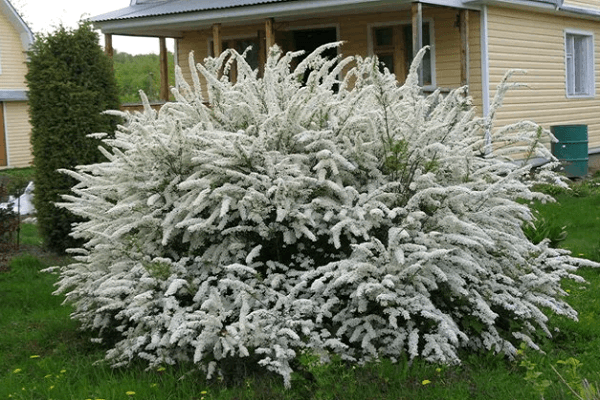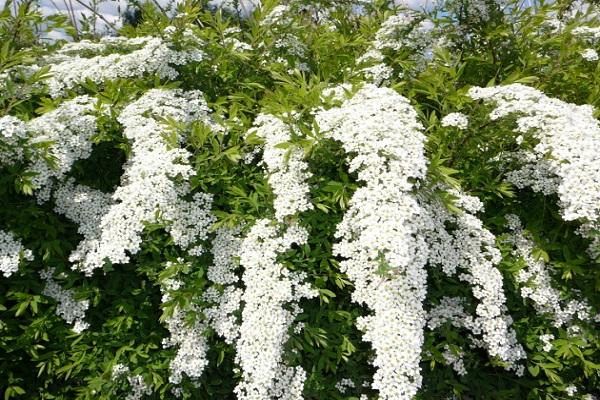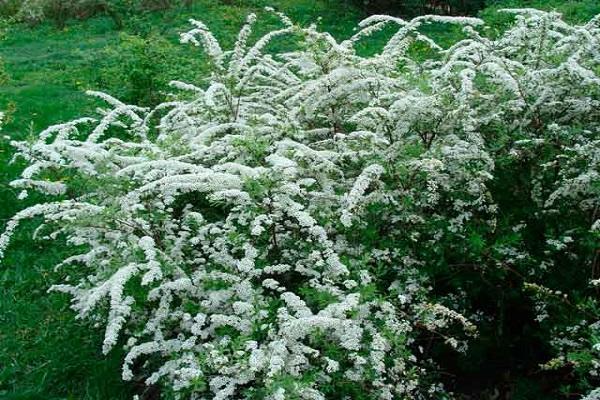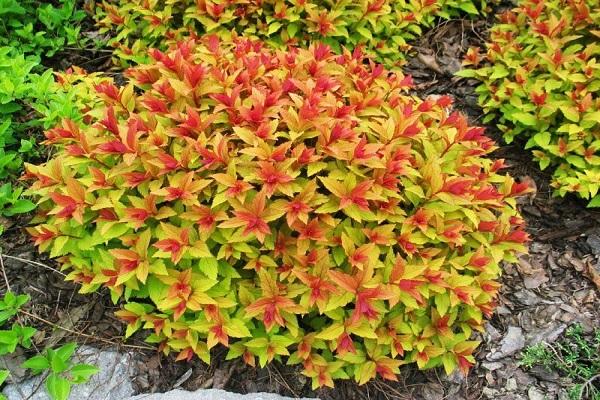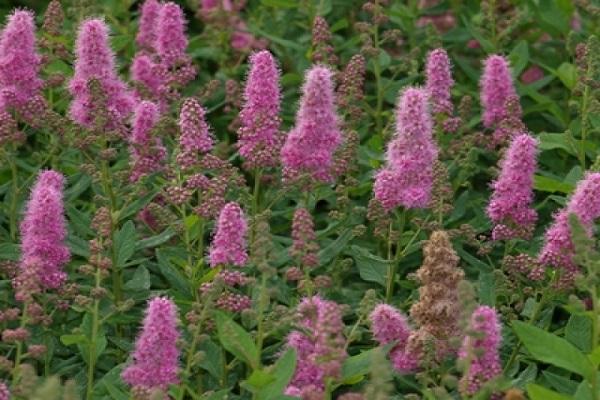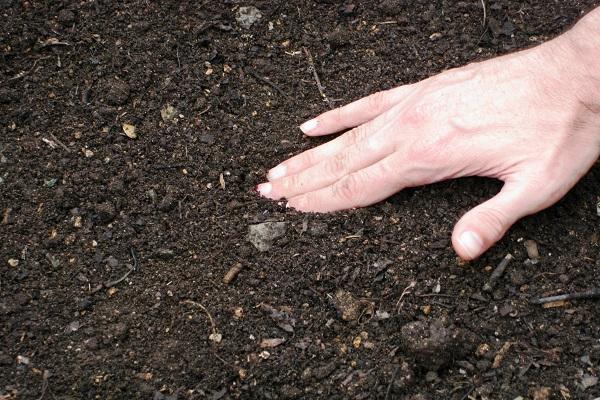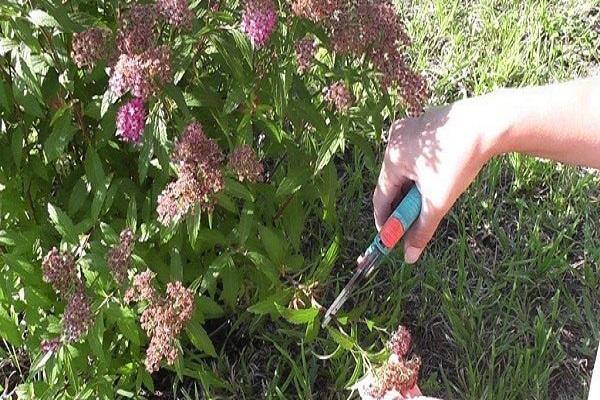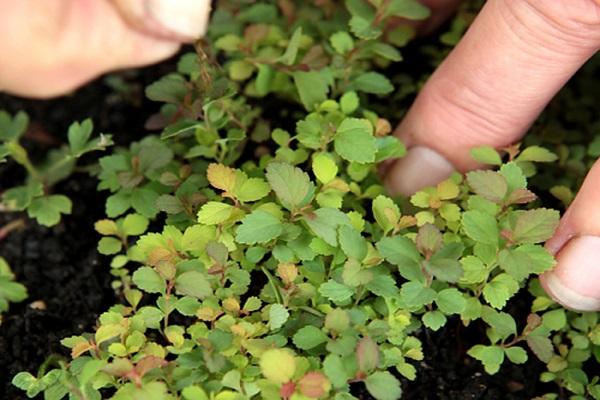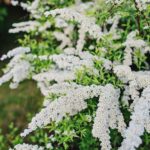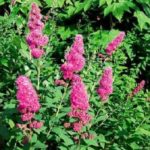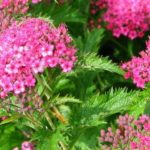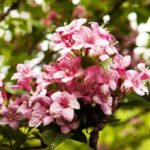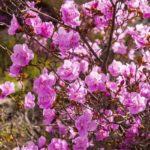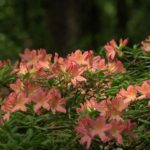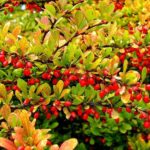Gardeners often select original shrubs to decorate their plots. An important issue remains the correct selection of plants taking into account climatic conditions. There are certain requirements for planting spirea in Siberia and caring for it. Although the shrub is frost-resistant, you need to properly prepare it for winter.
- Features of growing spirea in Siberia
- Suitable varieties
- Gray
- Wangutta
- Willow
- Japanese
- oak leaf
- Billard
- How to grow a shrub?
- Selection of planting material
- Soil and site preparation
- How and when to plant?
- Flower care
- Feeding for growth and flowering
- How to prune spirea?
- Shelter for the winter
- Protection from diseases and pests
- Reproduction of spirea in Siberia
Features of growing spirea in Siberia
Spiraea is an unpretentious plant, but cultivation in Siberia requires the only important condition - the selection of a variety adapted to a given climatic zone. There are quite a lot of such varieties. If you follow the rules of care and nutrition, the plant produces abundant flowering.
Suitable varieties
Spiraea has a large number of varieties, and many of these shrubs can be grown in Siberia. The plant can be roughly divided, depending on the timing of flowering, into spring and summer. The most common of them are presented below.
Gray
One of the most popular varieties is hybrid. Obtained by crossing St. John's wort and grayish-white spirea. The shrub has white flowers with a gray tint, forming bouquets distributed along the entire length of the sprout. It blooms throughout the month, starting in mid-May.
The plant is spreading, reaching a height of up to 2 meters. The crown is formed from spreading shoots. The leaf blades are oblong and have a rich emerald color. The lower part of the leaf blade is grayish in color.
The bright representative of this hybrid is recognized Spiraea Grefsheim. It has an original lush appearance and is characterized by increased winter hardiness. It blooms in the second year after planting. The period lasts from 35 to 45 days. The flowers are double, small, 10 mm in diameter, collected in bouquets.
Wangutta
Another representative of the hybrid. Characterized by increased frost resistance. A representative of large bushes, the height and spread can reach 2 meters in size.
The formation of the bush occurs due to spreading branches, which are abundantly covered with jagged foliage. Leaf color: green on top, bluish underneath.Small flowers, up to 60 mm, create bouquets distributed over all branches. Blooms by mid-June. Some varieties of shrubs repeat flowering in August.
Willow
The bush is erect and grows up to 2 meters. The branches have a reddish tint, are covered with pointed foliage, reaching a length of 0.1 m. A characteristic feature is that the leaf blades are whitish not from below, but from above.
Pyramidal bouquets consisting of pinkish and whitish flowers are distributed throughout the bush. It is resistant to cold and has increased endurance. Prefers to grow near bodies of water.
Japanese
It is the Japanese spirea that is most recommended for cultivation in Siberia. Characterized by increased resistance to temperature changes and frost. A small shrub from 1 to 1.6 meters in height is characterized by a hemispherical shape. The leaves, which have a pinkish tint and are bluish below, give the plant a special charm and decorative appearance. Blooms with small red-pink flowers. In autumn the bush appears as a red-pink ball. Flowering duration is up to 2 months. This hybrid has the following varieties:
- Little Princess. A low shrub, up to 0.65 m and a diameter of up to 1.4 m. It has small dark green foliage. Blooms by mid-summer and is characterized by good resistance to cold.
- Golden Princess. It differs from the shrub described above in size; it can reach a meter in height. Completely covered with yellow foliage.
- Shirobana. Shrub up to 0.8 m tall, crown span up to 1.3 meters in diameter. Characterized by narrow green leaves. The flowers are white, sometimes pink, blooming in the second decade of summer.
- Goldflame. A representative of low shrubs, up to 0.7 m, covered with stunningly beautiful bright foliage.They have a bright yellow color with an orange tint, then acquire a rich yellow, then a greenish color, and finally become copper-orange. The color of the flowers is pink with a red tint.
oak leaf
It is characterized by unpretentiousness and grows even on rocky soil. It is a small shrub with small green leaves that turn golden in autumn. The flowers are cream, collected in bouquets. Flowering duration is up to 20-25 days.
Billard
A hybrid representing a tall shrub reaching 2 meters in size. The branches of the bush are densely covered with fleecy foliage up to 0.1 m long. The flowers are united in pyramidal inflorescences. The plant does not produce seeds, so it is propagated by cuttings. Characterized by increased frost resistance and whimsicality in shade conditions.
How to grow a shrub?
Cultivating shrubs is not difficult. The success of plant development depends on correctly carried out preparatory work and the implementation of the planting procedure. Correct landing is the key to success. Therefore, it is important to buy high-quality seedling material and choose a location.
Selection of planting material
An important point remains the acquisition of healthy planting material that meets all quality requirements, as well as the choice of exactly those species that are suitable for a given region. Spiraea is recognized as a hardy and frost-resistant shrub, so almost all varieties are able to adapt to Siberia.
Primary requirements:
- It is recommended to purchase at specialized points of sale;
- A visual inspection of the bush is important: during spring planting there should be no swollen buds or emerging leaves, and during autumn planting the bush should shed its leaves;
- inspect the roots (if they are open): the roots should be elastic, without signs of mold, slight damage increases the chance of infection;
- When purchasing shrubs in containers, spirea plants at any time.
Soil and site preparation
Selection of the most favorable site and preparation of soil that meets the requirements is the key to the full development of the shrub.
Despite the fact that the plant is considered unpretentious, it is necessary to create conditions for rapid adaptation and abundant flowering. Accordingly, it is recommended to choose a sunny area; planting in a shaded area reduces the decorative qualities of the shrub. It is undesirable to plant in lowlands, especially where humidity and cold accumulate.
The crop has a fairly developed root system; therefore, it is undesirable to plant it next to fruit bushes and trees. Spiraea requires light, enriched soil that easily allows oxygen to pass through. When planting in spring, it is important to prepare the soil in the fall and add the necessary fertilizers.
How and when to plant?
Shrubs are planted in spring or autumn, depending on the selected variety and flowering period. When blooming in spring, it is recommended to plant in autumn. Optimal period: August - early September. Late varieties should be planted in early spring.
Sequencing:
- First, the landing pit is prepared. This is done several days before landing. Depth up to 0.7 m, width depends on the type of shrub and the degree of development of the root system.
- When planting more seedlings, it is recommended to maintain distance. If the planting is intended to be used as a hedge, the distance is from 0.3 to 0.5 m. For single seedlings: low-growing - 0.8 m, tall - no less than a meter.
- Place a drainage layer on the bottom; it is recommended to use crushed stone, crushed brick, and expanded clay.
- If the seedling is bare-rooted, it must be placed in liquid, and the bush in the container must be watered.
- Next, it is recommended to trim the sprouts and shorten the roots by 2-3 cm.
- Mix the soil with fertilizers, rake a hill, and place a bush on it.
- Sprinkle the bush with soil, compact it thoroughly, and water it.
- Be sure to mulch, use peat, humus, and pine needles.
Flower care
Minimum crop care requirements:
- Steady watering is necessary, although the plant is recognized as drought-resistant. Spirea should receive 12-16 liters of liquid per month. In hot weather, watering is carried out once every 14-16 days; it should be plentiful, especially for newly planted ones.
- After watering, the soil must be loosened to prevent crust formation. Loosening is carried out carefully and shallowly so as not to injure the roots.
- It is periodically necessary to add a layer of mulch to retain moisture and create a microclimate.
Feeding for growth and flowering
For abundant fruiting, it is important to apply fertilizers in a timely manner. In spring, nitrogen-containing preparations or organic matter are introduced. At the beginning of summer, the bush needs to be fed with a complex of mineral preparations. At the end of summer, enrich the soil with phosphorus-potassium preparations.
How to prune spirea?
Sanitary pruning of shrubs is carried out in the spring, all weakened shoots that are damaged are removed. For spring flowering crops, only the tops should be trimmed. In later ones, all branches are shortened by 1/3. For seven-year-old bushes, it is recommended to perform anti-aging pruning: remove all branches, leaving 6-7 young ones.
Shelter for the winter
The plant is considered frost-resistant, but still needs shelter. The branches must be tied and bent to the ground, sprinkled with leaves and pine needles.
Protection from diseases and pests
The plant is not susceptible to diseases. But spirea is loved by pests, especially spider mites. Signs of damage: cobwebs, yellowing and falling leaves, sickly appearance of the plant. Treatment with Phosfamide and Karbofos will be effective.
Aphids that overpower a plant suck the juices out of it. It is recommended to use Pirimor or other drugs.
Reproduction of spirea in Siberia
This culture reproduces in several ways. Each of them has its pros and cons, while some varieties are suitable only for one method. For example, Billarda is bred only by cuttings.
Reproduction methods:
- Seminal. Only species-specific shrubs reproduce; hybrid varieties do not bear fruit. Seeds are collected from ripened capsules. Germination rate is high. Seeds are sown in prepared containers, watered, and covered with film. After the shoots appear, remove the film. When 2-3 leaves appear, dive.
- By layering. A simple and effective way. In the spring, bend the lower branches of the bush to the ground, secure, and sprinkle, leaving the top. In autumn, plant the cuttings in a permanent area.
- Cuttings. The rooting coefficient is 70. Depends on the flowering period: early shrubs are cut in the first days of June, late ones - in July. If the cuttings are lignified, it is carried out in the fall. Prepare cuttings with 5-6 leaves, the recommended length is 0.1 m. Remove the lower foliage. Soak in a growth stimulator for half a day. Plant in prepared containers with soil mixture at an angle. Cover with jars or film. Irrigate periodically and carry out regular watering.During the winter, dig up and cover the cuttings, and in the spring plant them in an area of constant growth.
Compliance with simple requirements for planting and care contributes to the active development and abundant flowering of the shrub; timely preventive treatment will preserve the flower from pests.

